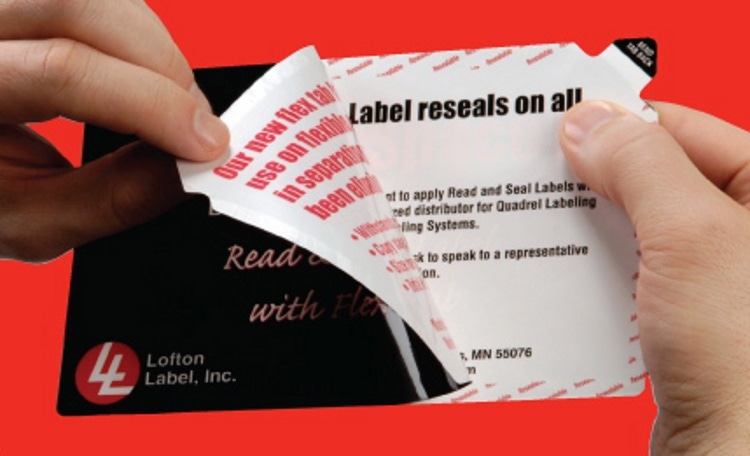May 12, 2015

You’re not likely to hear “trendy” and “peel-and-seal labels” used in the same sentence. And that’s ok. Unless the product is a phone you wear on your wrist or something similar, practical almost always trumps trendy in the long run.
The fact is, there are many solid reasons for manufacturers and marketers to take a fresh look at the versatility and cost-effectiveness of peel-and-seal label solutions—especially when dealing with limited label space on which to communicate brand and product information.
Here are four of the most practical reasons to choose peel-and-seal labels:
1. Regulatory fine print needs a place to call home.
Pharmaceutical and nutraceutical manufacturers are especially vulnerable to the changing mandates for information they are required to print on their small-sized, over-the-counter product packaging.
The Food and Drug Administration and other industry governing associations require many product labels in this category to include extensive information like nutritional facts, ingredient lists, usage instructions and cautions/side effects. When combined with type-size requirements, this makes the multi-layer adhesive label a logical solution.
2. Multiple languages, diverse markets.
Whether a product is simultaneously marketed in different parts of the world, or in multi-language communities right here in the United States, a peel-and-reseal label or extended content label, such as an expandable fold-out panel, can work well.
Languages can appear side-by-side, or the primary language can appear on the outer label face. Experienced label manufacturers will customize a solution that simultaneously meets regulatory mandates and market needs.
3. Save money on printing, packaging, shipping and more.
Avoid additional paper inserts for compliance language. Skip double inventory for the Spanish-language product version. Price out the alternatives to see how much peel-and-seal labels can save.
If you work with a label manufacturer who can digitally produce peel-and-reseal labels, the savings potential is even greater. Why? Regulations can change frequently, and digital printing allows manufacturers to keep inventories low and minimize losses when regulations change. This, in turn, enables companies to get updated products into the market as soon as possible, reducing turnaround time and revenue losses, and minimizing the risk for non-compliance.
4. Sell more products to more people.
Don’t underestimate the power of a label to beef up marketing capacity. Peel-and-reseal labels are an economical and creative way to increase customer response and brand interaction.
Think of the label as already-bought-and-paid-for ad space—simply add your promotional message.
Let’s take the example of a food company or distributor that sells sausage, as well as cheese products. A peel-and-reseal label allows that company to use the second layer of the label to promote the complementary cheese product, and vice versa.
Sweepstakes game pieces, direction of use, recipes and instantly redeemable coupons are a few more examples that demonstrate the marketing potential of peel-and-reseal labels.

Gary Bird is a product development specialist with Lofton Label, a Twin Cities-based label solutions provider. He has more than 20 years of industry experience.
About the Author(s)
You May Also Like


